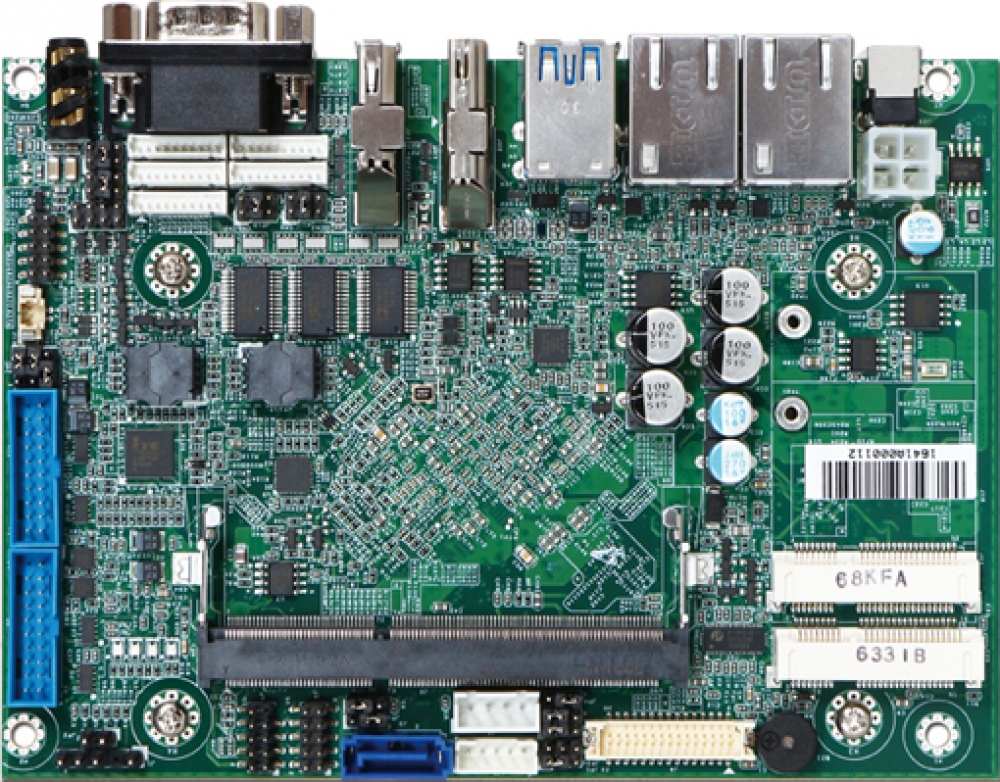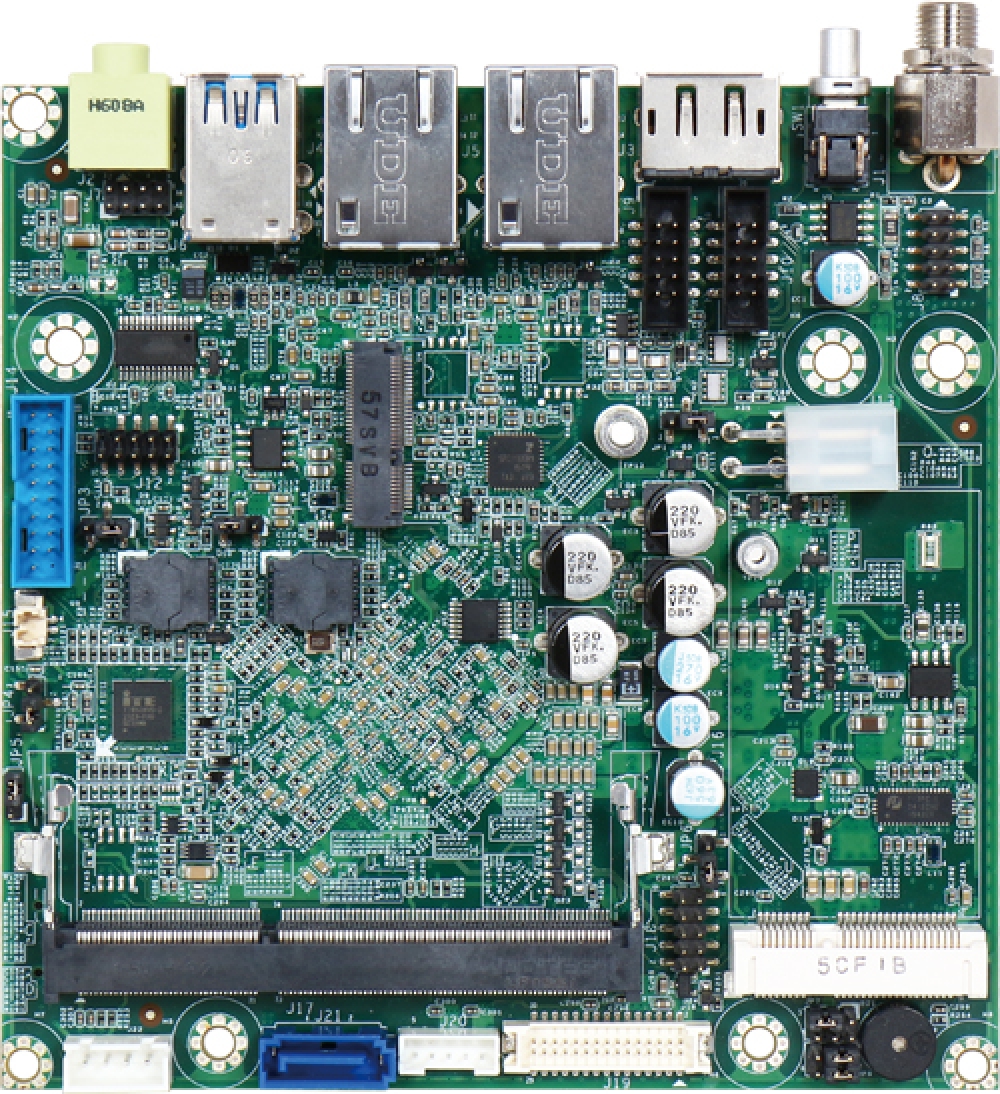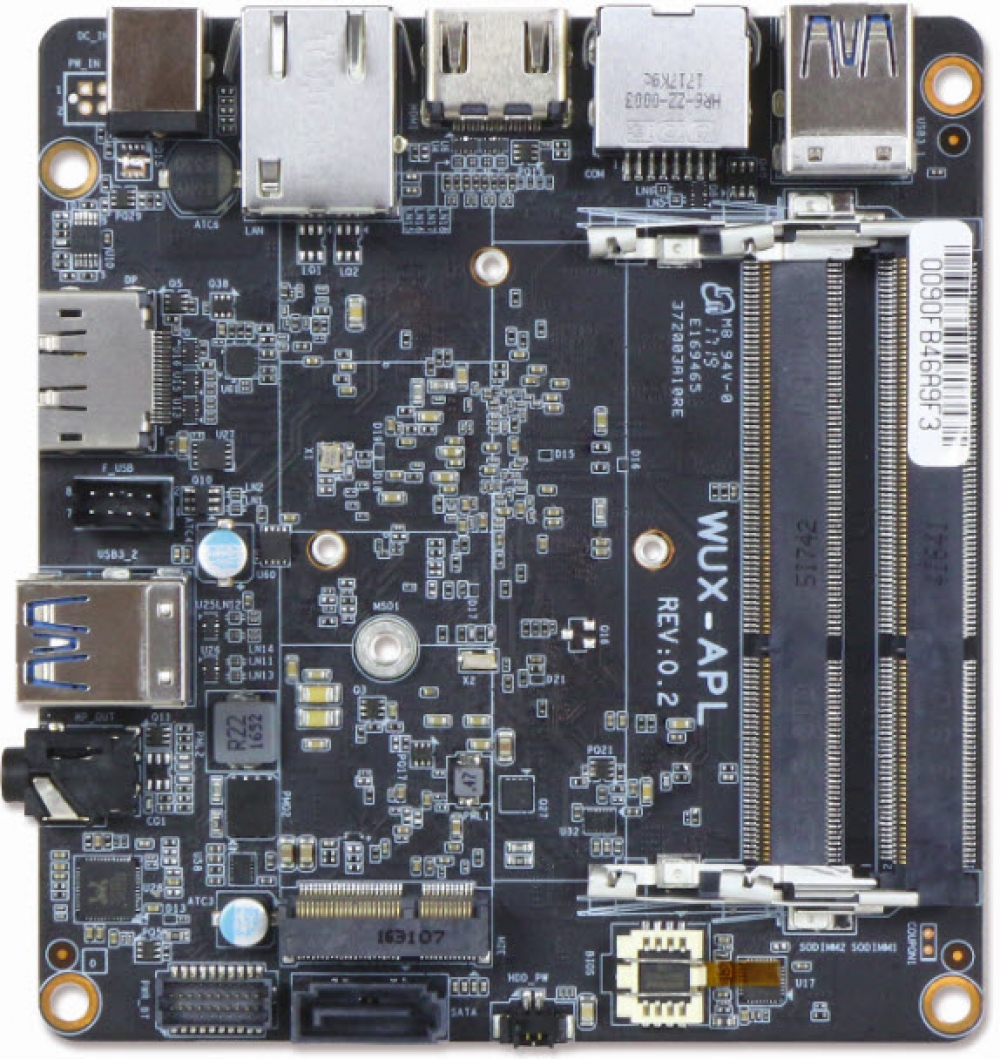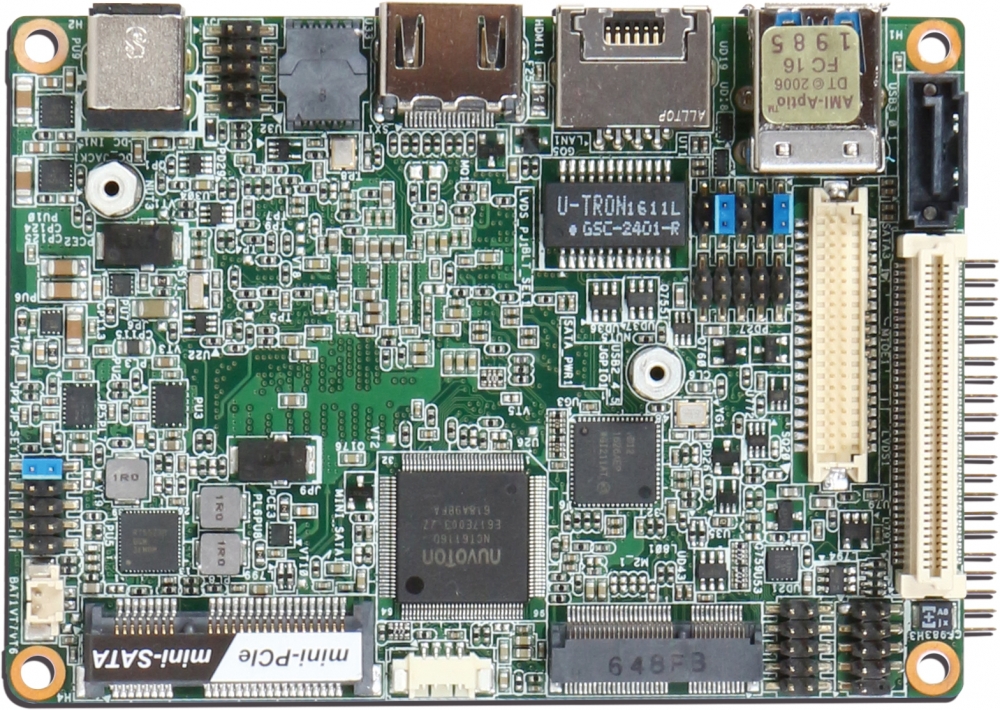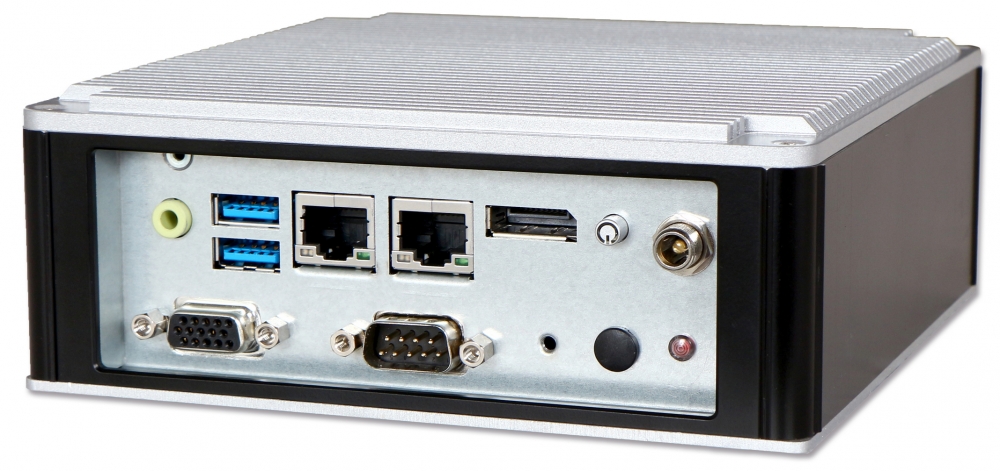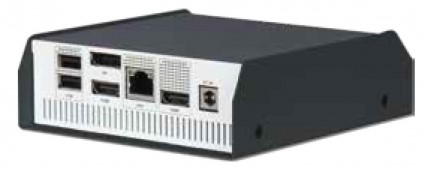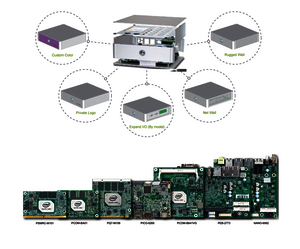Apollo Lake – Overview
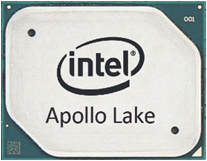
The tapered edges of the metal cap and the metal cap itself are a clear feature for Intel's Apollo-Lake processors – in everyday life it will disappear under the heat sink. offering a broader contact space for cooling solutions is one feature that will help embedded vendors to design more compact systems with even more processing power. This is the improved surface, but what improvements have been made inside the processor?
The newcomers are manufactured in 14nm technology and provide approximately 30 percent better computing and 45 percent more graphics / video performance than their predecessors. The power consumption remains relatively low with 6 to 12 W TDP and stays at the level of the former generation.
The new silicone features Intel's Gen 9 graphics, which in the past was reserved for the sixth-generation core processors only. This gives the new CPU series a significantly improved support for 4k graphics resolution. Up to three independent displays can be operated simultaneously, and DirectX 1.2, OpenCL 2.0 and OpenGL 4.2 are supported. The integrated security engine provides better security while the optional Error Correcting Code (ECC) preserves data integrity. The protection capabilities in the new processors were built from the ground up to ensure a new level of security. Each time the system starts up, secure boot with Intel Platform Trust Technology helps to keep the device safe, blocking dangerous programs, so only trusted software is launched. All this works behind the scenes of the new processor but delivers more power and advanced cooling to applications.
Ready-To-Go System Solutions
Portwell's wide-range product line gives customer rich choices. Customers can select different form factors from modules (COM Express, Q7, ETX) and embedded boards (ATX, Mini-ITX, Nano-ITX), SBC (PICMG 1.0, PICMG 1.3, Backplane), to systems (Panel PC, Box PC). With Portwell's unique modular design, no matter what kind of solution you're looking for, you can simply start by selecting your preferred platform. Then our complete one-stop service will help you on integration with software (BIOS, EC, embedded OS, BSP, API), hardware (expansion, form factor, peripheral devices, PSU), and system (thermal, chassis). It's simply like playing Lego; just picking up options of bricks then building them up into a system. This easy but quick way will only consume a short period of time on verification and validation. The next step is to meet customer's requirements with our flexibility and customization capability.

